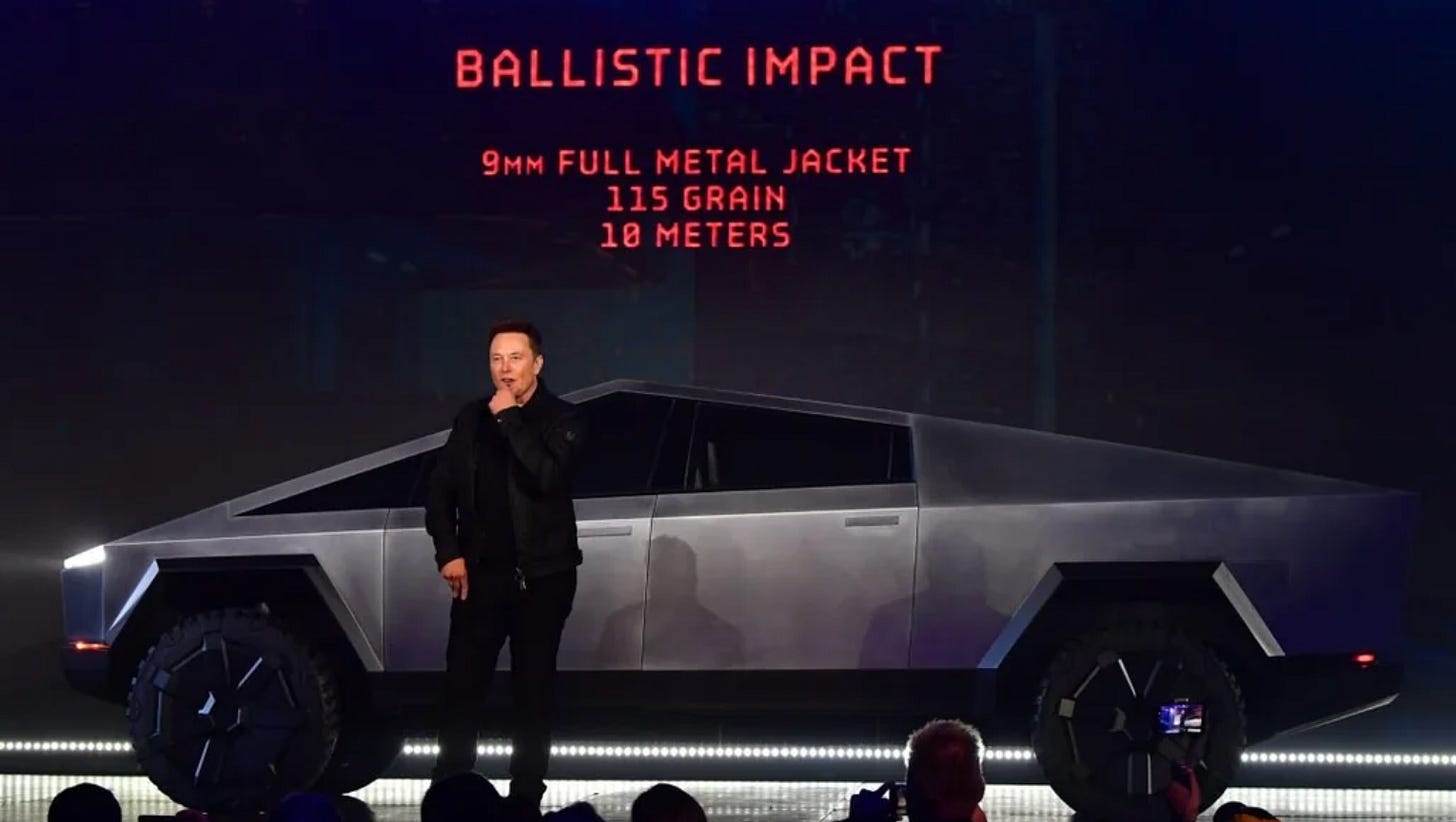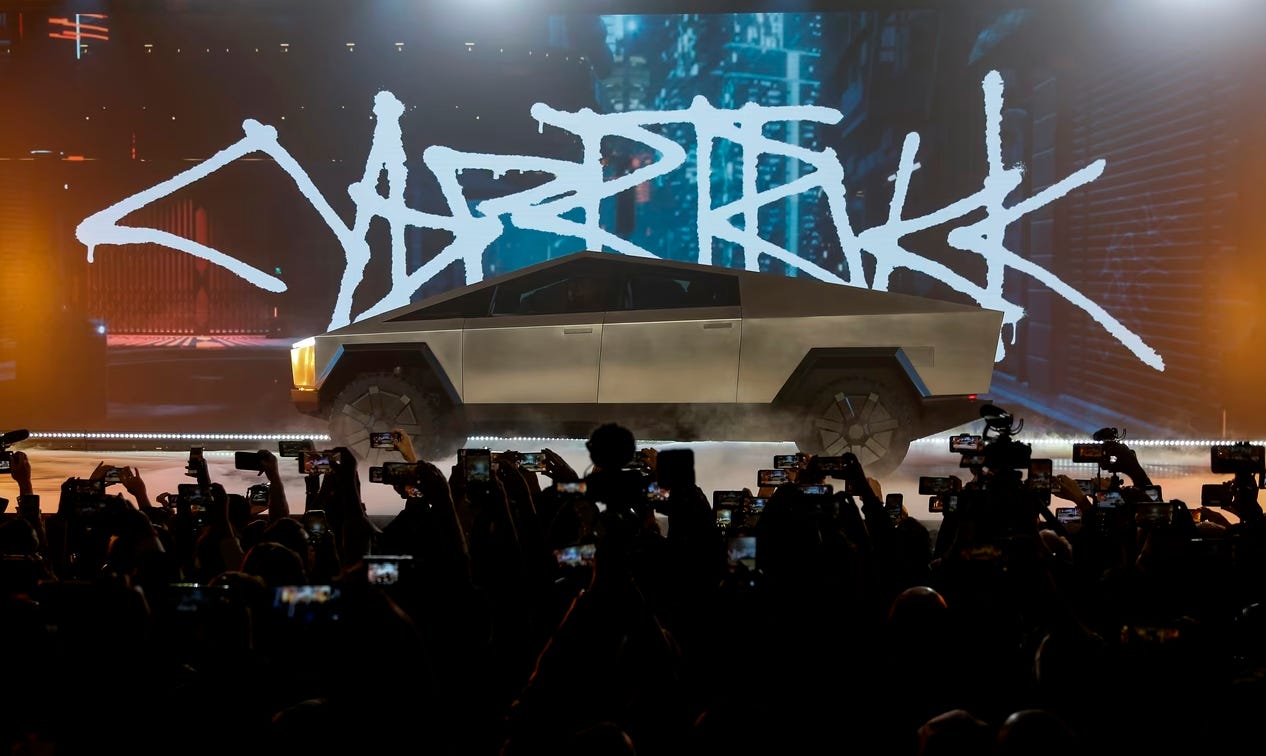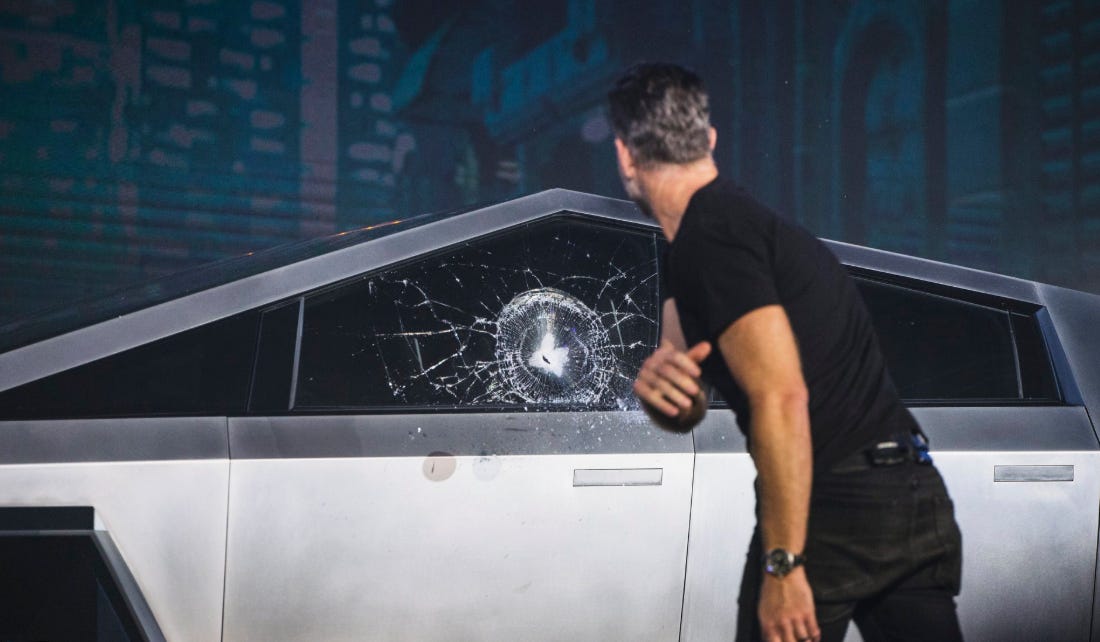🚫 The Tesla Cybertruck: A cautionary tale in ego-driven product development
Innovation wins when it serves customers… not just the founder’s heroic narrative.
Founders love to break rules — and thank goodness for that. But there’s a dangerous flavor of rebellion: chasing disruption for the ego hit alone. Building what YOU think is mind-meltingly cool, while the market quietly wonders, “But… why?”
Enter: the Tesla Cybertruck.
Elon Musk had already learned this lesson once. The falcon-wing doors on the Model X SUV? They were tech theater — clever, expensive, and headache-inducing. Musk later admitted:
“I do think there is some hubris there with the X… I’m not sure Tesla would make a car like this again.”
And then, somehow, the Cybertruck arrived to say: hold my stainless steel.
⚙️ Over-Engineered Ego
The Cybertruck wasn’t just unconventional — it felt like Musk dared the automotive industry to laugh at him. It was his billion-dollar passion project:
“To be frank, there is always some chance that Cybertruck will flop, because it is so unlike anything else. I don’t care,” Musk tweeted. “I love it so much even if others don’t.”
Mission accomplished.
Stainless steel exoskeleton → almost impossible to form, costly to weld, questionable crash performance
Sharper edges than a Minecraft sword → pedestrian safety nightmare
A truck bed that’s smaller and harder to access than a crossover SUV
Promised base price: $39,900 (never materialized)
Top-tier trim: quietly scrubbed from Tesla’s website
Reservations flooded in — over 1 million people sent Tesla $100 for their place in line. But a deposit is enthusiasm, not demand. When production began, the conversion rate evaporated, with only 2.5% of reservation holders actually making the purchase.
🎤 The Night the Kool-Aid Overflowed
November 2019. Musk’s “Cybertruck Reveal” in Hawthorne, California — streamed live to hundreds of thousands of people. He boasted the truck had:
“Ultra-hard 30X cold-rolled stainless steel… you want your truck to be tough.”
Then:
“Armor glass. Bulletproof.”
We all know what happened next. Tesla Chief Designer Franz von Holzhausen winds up with a solid steel ball. Thud. Spiderweb of cracks. Gasps. Musk forcing a laugh:
“Well… maybe that was a little too hard.”
For reasons known only to the 100%-ego-side of his brain, they tried again on the rear window. Crack. Again.
Musk, visibly shaken but still clinging to the bit:
“Room for improvement.”
Iconic technology launch → accidental slapstick. It’s worth watching the 60-second video of this moment to fully understand the cringe factor.
Even the memes recognized the moment: a truck designed to survive bullets couldn’t survive its own marketing pitch.
Beta products can still have kinks but even after delivery of Cybertrucks to paying customers, very serious issues emerged in the field:
a stuck accelerator pedal (because Tesla decided last minute to use soap to slip the pedal cover on in the factory)
body panels falling off the truck (because they used the wrong adhesive on stainless steel)
🧠 The Real Lesson for Founders
This isn’t about dunking on Elon (credit where due: Tesla reinvented the car industry). It’s about respecting the physics of markets:
Break rules to unlock value — not to unlock applause
Novelty is only healthy when tethered to usefulness.Customer > Cool
A truck that can’t do truck things is modern art, not a product.Ego compounds engineering risk
Every “just for fun” detail is a tax on manufacturing and on user patience.
The Cybertruck isn’t a failure — but it is a cautionary tale:
Disruption for the sake of disruption is just rebellion cosplay.
At Ubiquity Ventures, we back founders with bold visions — but also bold customer humility. The future should be innovative and wonderful… but it must also be wanted.
If you liked this post, read more about this topic in our past blog post: “Look What I Can Do” vs. “Look Who Cares”: Apple misses the mark with its new “Thinpossible” iPad Pro
Ubiquity Ventures — led by Sunil Nagaraj — is a seed-stage venture capital firm focused on startups solving real-world physical problems with "software beyond the screen", often using smart hardware or machine learning.
If your startup fits this description, reach out to us.







The accelerator pedal issue really underscores the risks of prioritizing aesthetics over fundamentals. Tesla's tradicional strength has been their powertrain technology, but the Cybertruck seems to have diverted engineering resources into solving problems that didn't need solving. The 2.5% conversion rate from reservations is particularly telling about the gap between hype and actual market demand.
The soap on the accelerator pedal really highlights how overengineering the aesthetic elements took precedence over fundamental vehicle safty. When a $100k truck can't match the practicality of a standard F-150, it's clear the design was more about making a statement than solving real problems. The massive gap between reservations and actual purchases shows customers ultimately want function over flex.